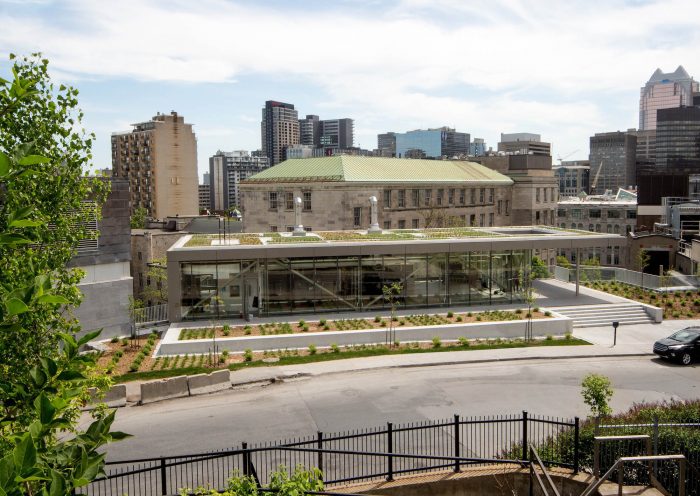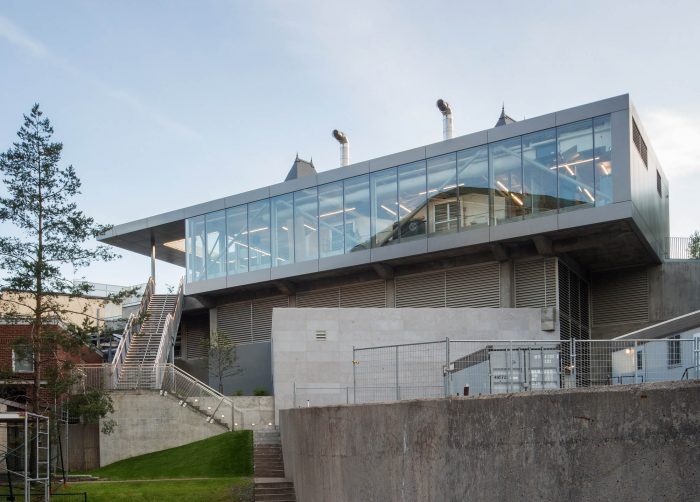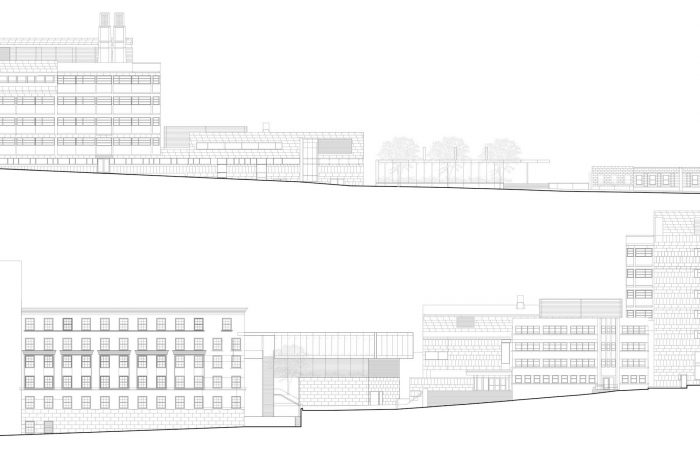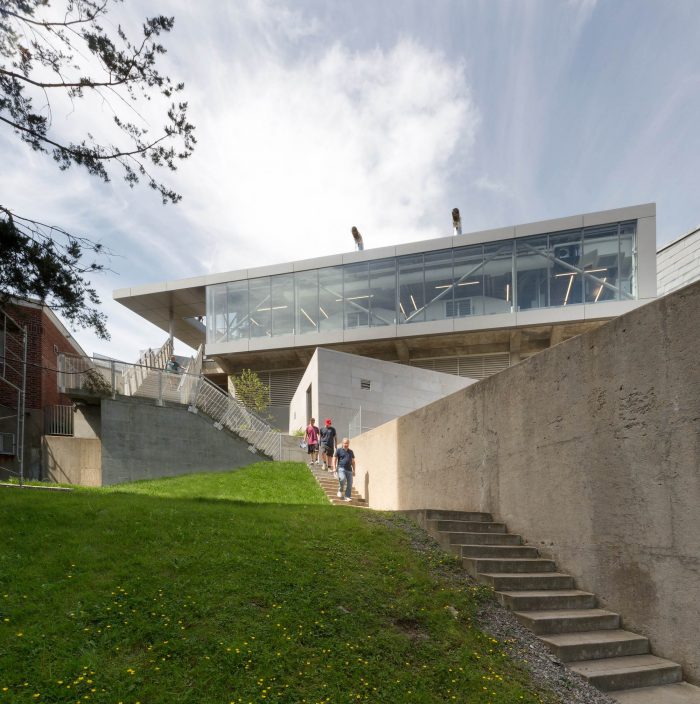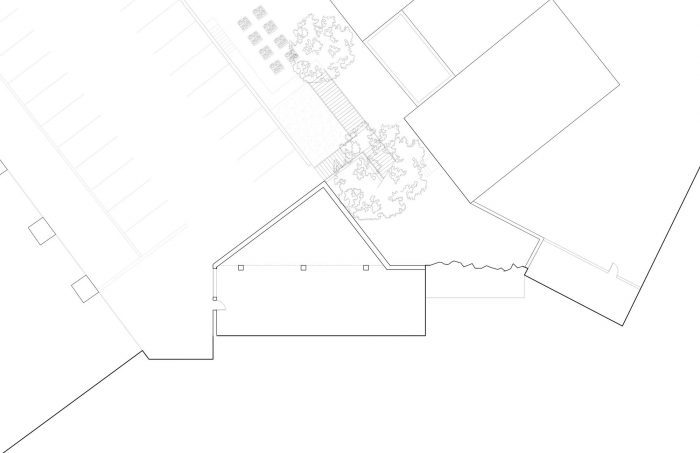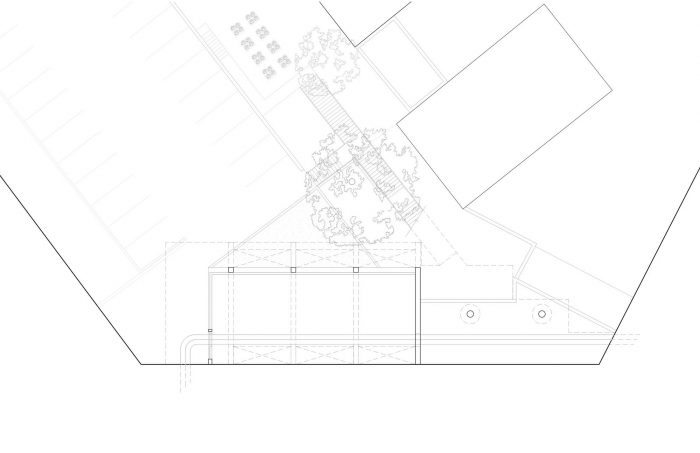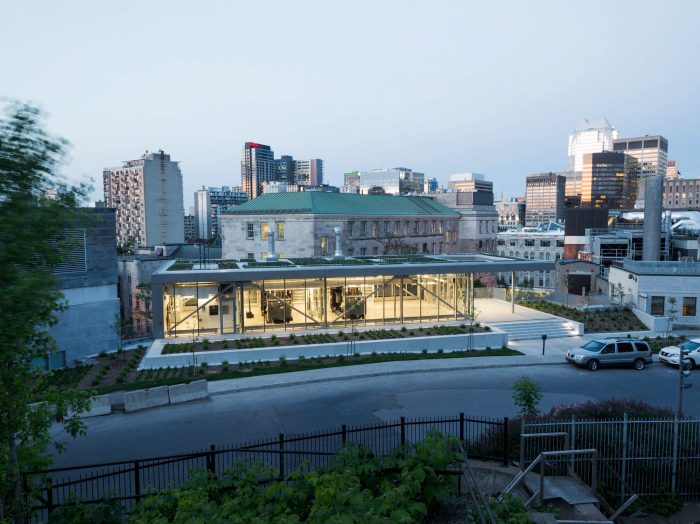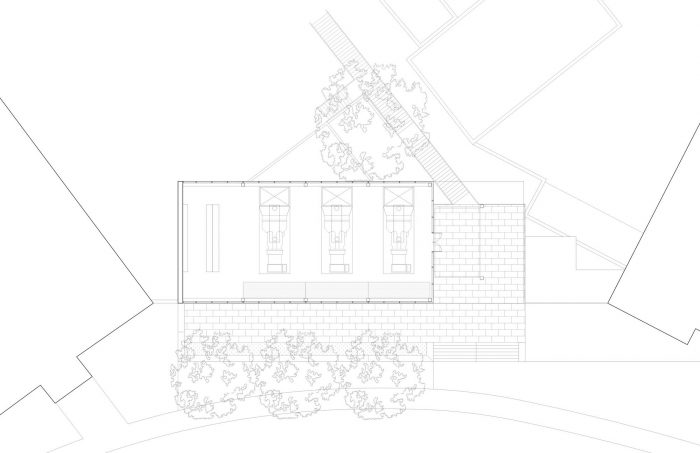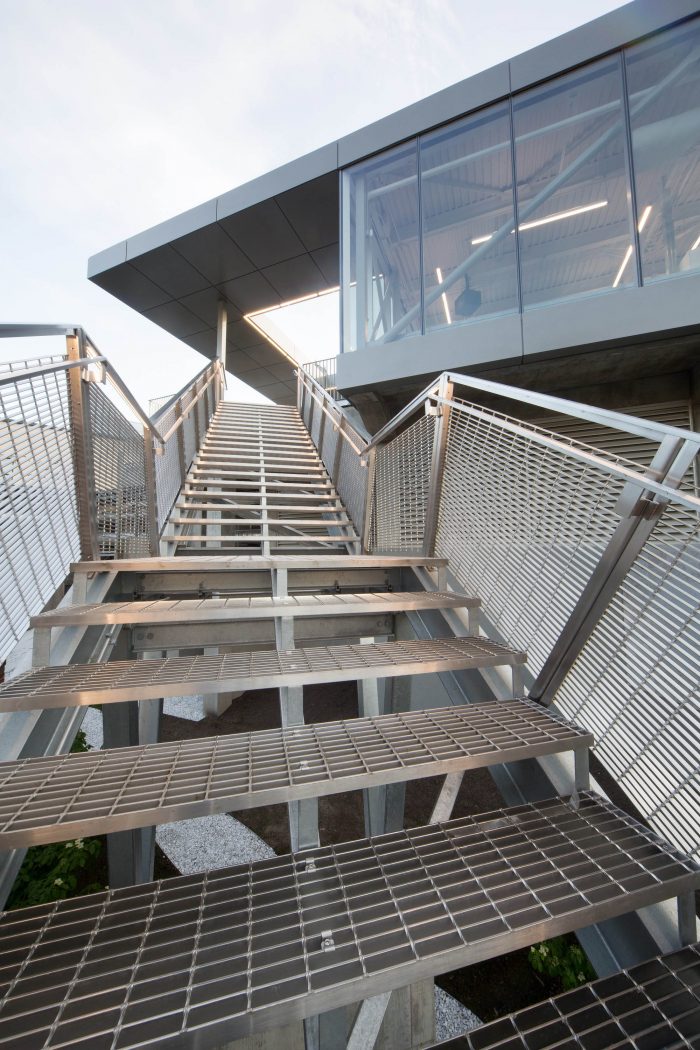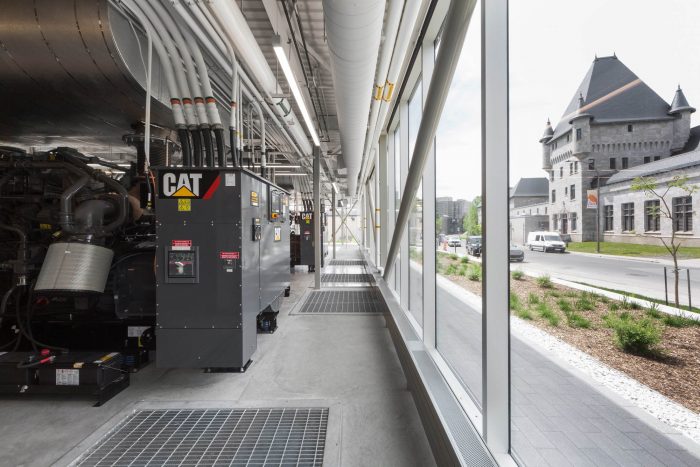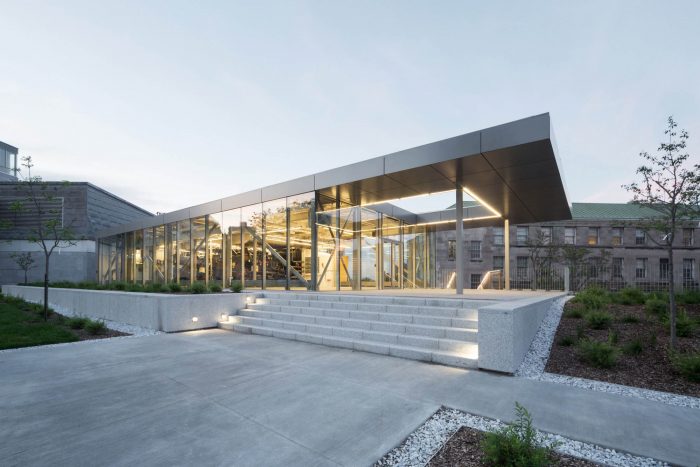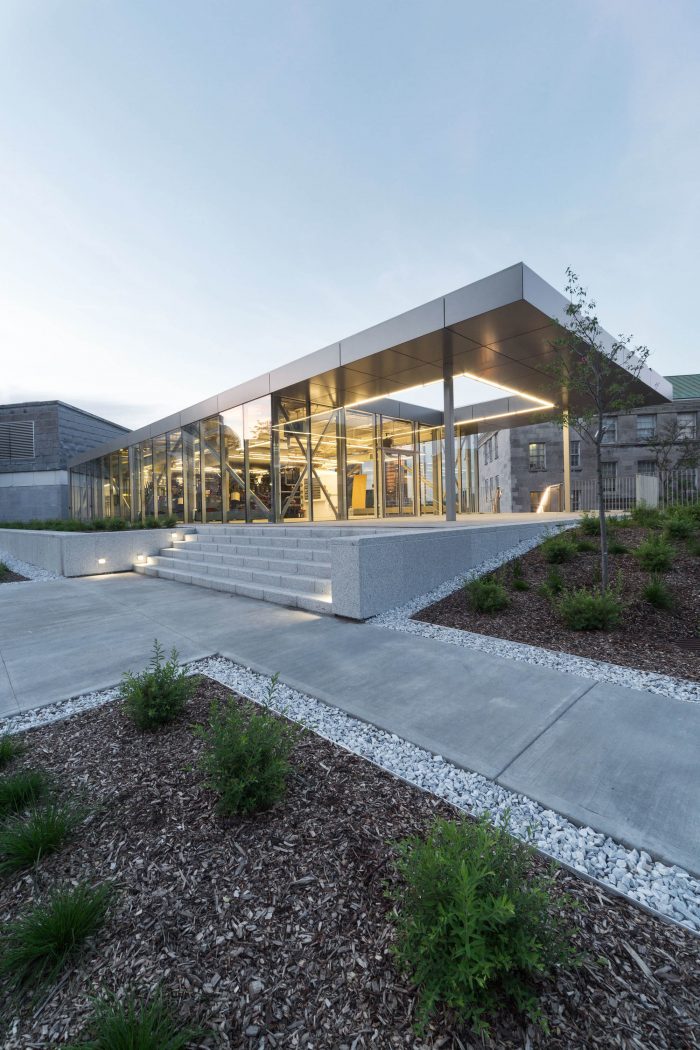麦吉尔大学需要一座新的建筑来容纳三个1.5兆瓦的应急设施,这些发电机将在停电的情况下保护研究活动。麦吉尔大学的热电厂和Wong馆、Rutherford馆、Administration馆和Leacock馆由位于锅炉房附近的Ferrier楼内的一台应急发电机供电。这就带来了风险,应该通过将新的发电机安置在邻近的独立空间来加以限制。
McGill University needed a new building to house three 1.5 MW emergency facilities, generators that will protect research activities in the event of a power outage. The McGill University thermal power plant and the Wong, Rutherford, Administration, and Leacock pavilions are powered by a single emergency generator located in the Ferrier building in the immediate vicinity of the boiler room. This presents risks that should be limited by Housing New generators in separate spaces in the immediate vicinity.
可行性研究比较了几个位置的假设,结果发现费里尔大楼(1963年)和黄亭(1990年)之间的结构位置是最佳位置。这些初步研究还描述了与两台所需的1.5兆瓦发电机相关的功能参数以及未来可能增加的第三台发电机。
The feasibility studies compared several location hypotheses, which led to the location of the structure between the Ferrier building (1963) and the Wong Pavilion (1990) being the best location. These preliminary studies also described the functional parameters associated with the two required 1.5 MW generators and the possible addition of a third in the future.
创新。该项目是作为多学科综合设计工作的一部分而开发的,结合了历史研究、建筑、工程、景观和城市声学,对一个不能局限于功利性考虑的问题做出了敏感的反应。
Innovation. The project was developed as part of a multidisciplinary integrated design exercise combining historical research, architecture, engineering, landscape, and urban acoustics to formulate a sensitive response to a problem that cannot be limited to utilitarian considerations.
陡峭的地段是彭菲尔德博士大道上的一个未使用的停车场,它支撑着一个已被拆除的温室。它面向麦克塔维什地下水库的城堡式泵站,是皇家山历史和自然区保护区的一部分。
概念。建议的概念是基于以下目标。
The steeply pitched lot was an unused parking lot on Dr. Penfield avenue, which supported a greenhouse that had been demolished. It faces the castle-style pumping station of the McTavish underground reservoir and is part of the Mount Royal historic and natural District protected area.
Concept. The proposed concept is based on the following objectives:
保留彭菲尔德博士层的透明度和通透性
在校园的顶部和底部之间建立一个额外的联系
构筑留在荒地上的斜坡
确保场地上有重要的植物存在
通过使用特伦顿石灰石,加强麦吉尔的具体特征
通过尊重现有的路线和模板来促进融合
所选择的解决方案是在石灰石平台上建造一个玻璃亭子,与邻近消失的温室位置的外墙对齐。屋顶延伸下的一个凉亭将其与Ferrier建筑分开,一个外部楼梯通向校园的低层。在这个亭子下面,一个通风管道允许所需的大量新空气通过地板进入,同时掩盖了连接黄亭和费里尔亭的蒸汽管道。后面的悬臂式悬挑在地板的底面有通风栅栏。
Preserve transparency and permeability at Dr. Penfield level
Establish an additional link between the top and bottom of the campus
Structure the slope left in the wasteland
Ensure a significant plant presence on the site
Strengthen the specific character of McGill by using Trenton limestones
Promote integration by respecting existing alignments and templates
The solution chosen is a glass pavilion on a limestone podium in alignment with the facades adjacent to the location of the disappeared greenhouses. A gazebo, under the extension of the roof, separates it from the Ferrier building and an external staircase leads to the lower level of the campus. Under this pavilion, a ventilation plenum allows the entry through the floor of the large amount of new air required while concealing the steam pipes connecting the Wong pavilion to the Ferrier Pavilion. The cantilevered overhang at the rear has vent grilles at the underside of the floor.
屋顶是植被的,因为建筑的高度很低,使这些表面暴露在皇家山南侧和周围建筑的视野中。对于用金属板覆盖的屋顶表面和墙壁,与铅有关的环境问题使我们不愿意使用王氏建筑上的镀锡铜,并导致我们提议在铝板上烘烤氟聚合物涂料,以与邻居的阴影相协调。在这个项目中,铁厂邻近部分的丙烯酸涂层已被石灰石护墙板取代。
The roofs are vegetated due to the low height of the building which exposes these surfaces to the view all over the south flank of Mount Royal and from surrounding buildings. For the roof surfaces and walls covered with metal panels, environmental problems related to lead discouraged us from using the tinned copper present on the Wong building and led us to propose a fluoropolymer paint baked on an aluminum panel to harmonize with the shade of the neighbor. The acrylic coating on the adjacent portion of the Ironworks has been replaced with limestone siding in this project.
该项目通过对场地地形的戏剧化处理,集中体现了山的潜在存在。虽然它是一个技术性的基础设施,但我们坚持将该建筑作为一个亭子来处理,这有助于提高麦吉尔大学校园的质量和特殊性。
The project focuses on the underlying presence of the mountain by dramatizing the topography of the site. Although it is a technical infrastructure, we insisted on treating the building as a pavilion that could help enhance the quality and specificity of the McGill University campus.
方案。校园家具和户外设施的存储和维护空间被布置在坡脚,石灰石包覆的主墙与校园的其他部分变得平行。楼梯脚下保留了一棵成熟的榆树,它将现有的人行道延伸到大学街,以丰富整个麦吉尔大学正在整合的人行交通网络。
Program. Storage and maintenance spaces for campus furniture and outdoor amenities are laid out at the foot of the slope and the limestone-clad main wall becomes parallel to the rest of the campus. A mature Elm is preserved at the foot of the staircase, which extends the existing sidewalks to University Street to enrich the network of pedestrian traffic that is being consolidated throughout McGill.
发电机被安装在一个玻璃亭子里,坐落在彭菲尔德博士街层的花岗岩底板上,而在下层则有校园街道家具的存储空间。这两个体量之间的间隙空间作为空气、蒸汽和电力连接到Ferrier发电站的一个羽翼。一个开放的楼梯沿着东西轴线打开了一个新的通道,连接校园的顶部和底部。
The generators are installed in a glass pavilion sitting on a granite baseboard at Dr. Penfield Street level while there is storage space for campus street furniture on the lower level. The interstitial space between these two volumes serves as a plenum for air, steam, and electricity connected to the Ferrier power station. An open staircase opens a new passage along the east-west axis to connect the top and bottom of the campus.
Architects: FABG
Year: 2020
Photographs: Steve Montpetit
structural Engineer: Ayad Bensbaa CIMA+
Client:McGill University (royal Institution for the advancement of science)
Project Manager:Johanne Guertain, GPH
Assistant Project Manager:Nadia Nachtigall, McGill University
Mechanical Engineer Electricity:Guillaume Bouccara, Alain Bilodeau, BPA
General Contractors:Benoit Fiset, David Morissette, Mathieu Mainville, QMD
Civil Engineer::Guillaume Harpin CIMA+
Landscape Architecture:Ziad Haddad WAA
City:Montréal
Country:Canada


